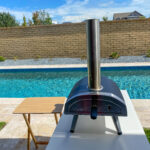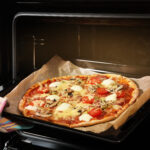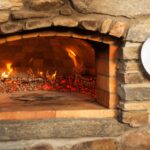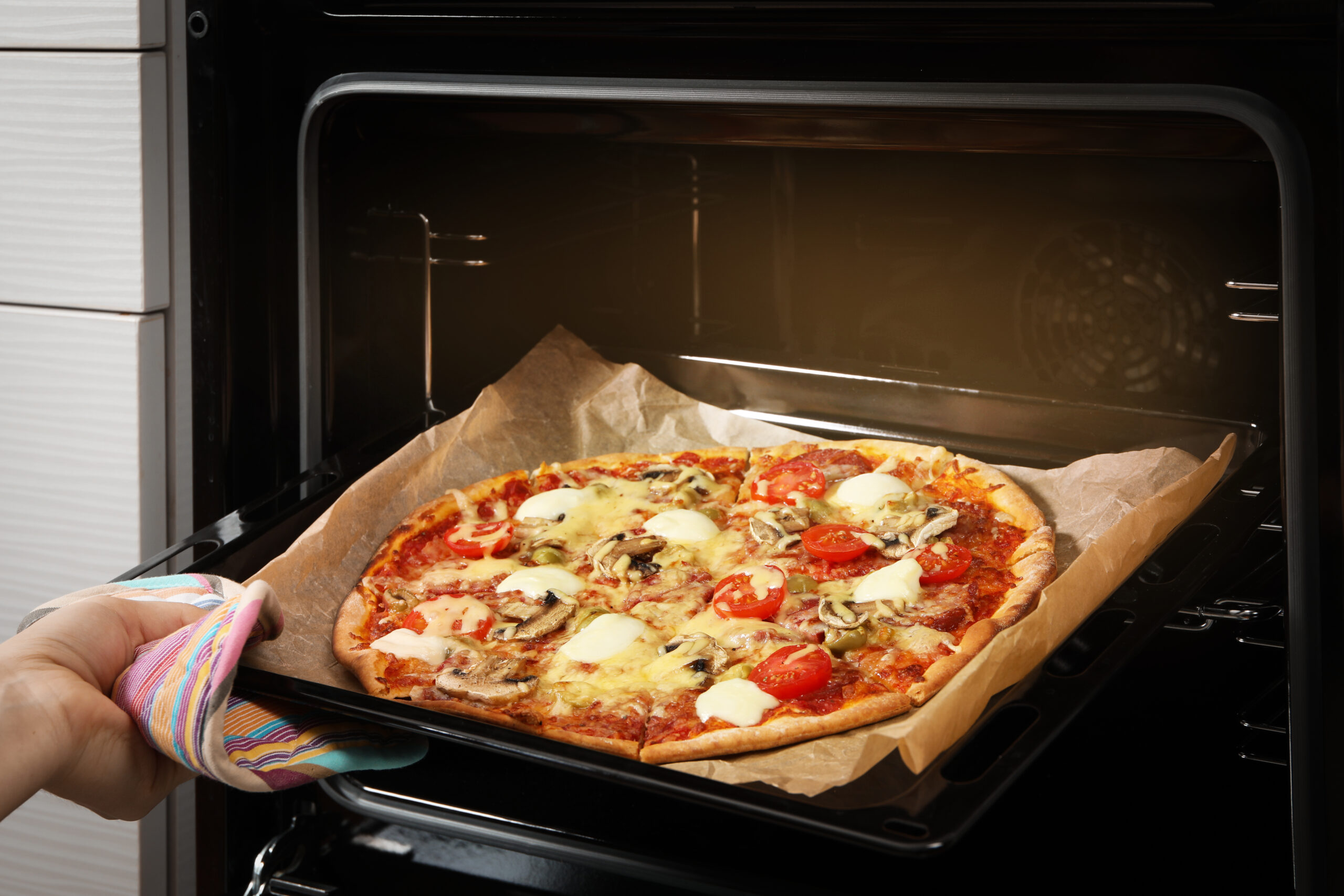Making pizza at home is a fun and delicious way to spend an evening, but what do you do if you don’t have a pizza pan? Fortunately, there are several ways to cook pizza without a pan, and you probably have the necessary equipment in your kitchen already.
One option is to use parchment paper. Simply roll out your dough on a sheet of parchment paper, add your toppings, and slide the whole thing onto a baking sheet or pizza stone in the oven. The parchment paper will prevent the pizza from sticking and make it easy to transfer to a serving plate once it’s done.
Another option is to use a rimmed baking sheet turned upside down. This creates a flat surface that’s perfect for baking pizza. Just make sure to sprinkle some cornmeal or flour on the surface to prevent sticking. And if you don’t have a baking sheet, you can also use a cast iron skillet or even a heat-resistant cutting board as a makeshift pizza pan.
Understanding Your Oven
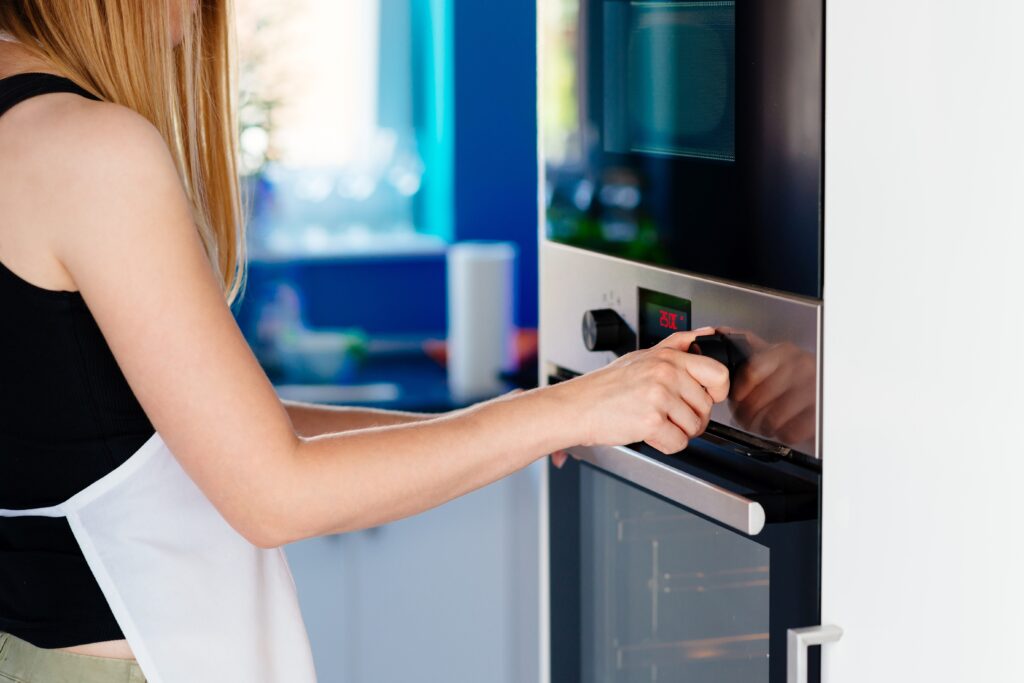
Before attempting to cook a pizza in an oven without a pan, it’s important to understand your oven’s features and limitations. Here are some key points to keep in mind:
- Temperature control: Most ovens have a temperature range of 200-500°F (93-260°C), but some models may have a wider or narrower range. Make sure you know your oven’s temperature range and how to adjust it.
- Heat distribution: Ovens can have different heating elements and fans that affect how evenly heat is distributed. Some ovens have a convection feature that circulates hot air, which can help cook food more evenly and quickly.
- Rack position: The position of the oven rack can affect how your pizza cooks. For example, placing the rack closer to the top of the oven can help brown the cheese and toppings more quickly, while placing it closer to the bottom can help cook the crust more thoroughly.
- Preheating: Preheating your oven is essential for getting the best results. Most recipes will specify how long to preheat your oven, but as a general rule, preheat for at least 10-15 minutes before cooking your pizza.
- Cooking time: The cooking time for your pizza will depend on a variety of factors, including the thickness of the crust, the amount of toppings, and the temperature of your oven. Keep a close eye on your pizza as it cooks and adjust the cooking time as needed.
By understanding these key features of your oven, you’ll be better equipped to cook a delicious pizza without a pan.
Choosing the Right Pizza

When it comes to baking a pizza without a pan, choosing the right pizza is crucial. Not all pizzas are created equal, and some may be more difficult to cook without a pan. Here are a few things to consider when selecting a pizza to bake without a pan:
Crust Thickness
Thin crust pizzas are generally easier to cook without a pan than thicker crusts. Thicker crusts can be more difficult to handle and may require more heat to cook properly. If you’re new to baking pizzas without a pan, consider starting with a thin crust pizza.
Toppings
The type and amount of toppings can also affect how your pizza cooks without a pan. Pizzas with a lot of heavy toppings, like meat or extra cheese, may take longer to cook and may require more heat. If you’re unsure, start with a pizza with lighter toppings and work your way up.
Frozen vs. Fresh
While it’s possible to bake both frozen and fresh pizzas without a pan, there are some differences to keep in mind. Frozen pizzas may have a thicker crust and require more time in the oven, while fresh pizzas may cook faster and require less heat. Be sure to follow the cooking instructions on your pizza carefully, regardless of whether it’s frozen or fresh.
By considering these factors, you can choose a pizza that is well-suited for baking without a pan. Remember to always follow the cooking instructions carefully and use the appropriate tools to handle your pizza safely.
Preparation Before Baking
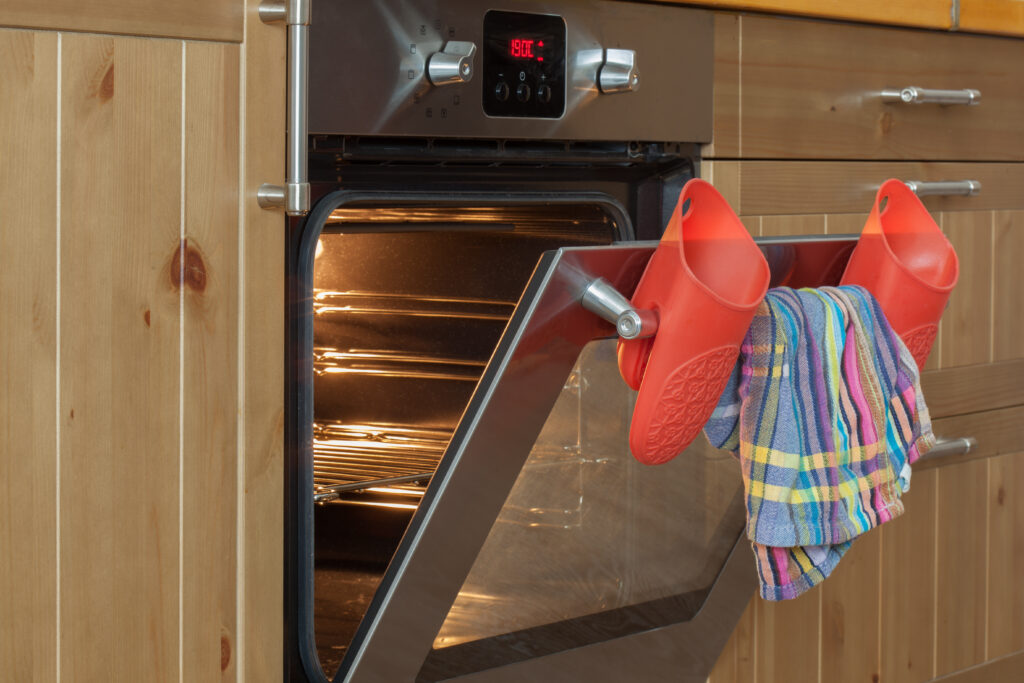
Preparing to bake a pizza without a pan requires a few steps to ensure that the pizza comes out perfectly. In this section, we will discuss the two most important steps: preheating the oven and preparing the pizza.
Preheating the Oven
Before putting the pizza in the oven, it is important to preheat the oven. Preheating the oven ensures that the oven is at the right temperature to cook the pizza evenly. Generally, the ideal temperature for baking pizza is between 450-500°F.
To preheat the oven, set the temperature to the desired temperature and wait for the oven to reach that temperature. It is important to note that different ovens may take varying amounts of time to preheat. A good rule of thumb is to wait for at least 10-15 minutes after the oven reaches the desired temperature before putting the pizza in.
Preparing the Pizza
Preparing the pizza is just as important as preheating the oven. First, decide on the toppings you want to use. It is important to not overload the pizza with toppings as this can make the pizza soggy and difficult to cook evenly. A good rule of thumb is to use no more than 3-4 toppings.
Next, dust a baking sheet or pizza stone with flour or cornmeal to prevent the pizza from sticking. Stretch the dough to the desired size and thickness, then add the sauce and toppings. If using cheese, sprinkle it on top of the toppings.
Once the pizza is assembled, carefully transfer it to the preheated oven. It is important to use a pizza peel or a flat surface like a cutting board to transfer the pizza. Bake the pizza for 10-15 minutes or until the crust is golden brown and the cheese is melted.
By following these simple steps, you can prepare your pizza for baking in the oven without a pan.
Baking the Pizza Without a Pan
If you don’t have a pizza pan, you can still bake your pizza in the oven. Here are two methods to try:
Using a Baking Sheet
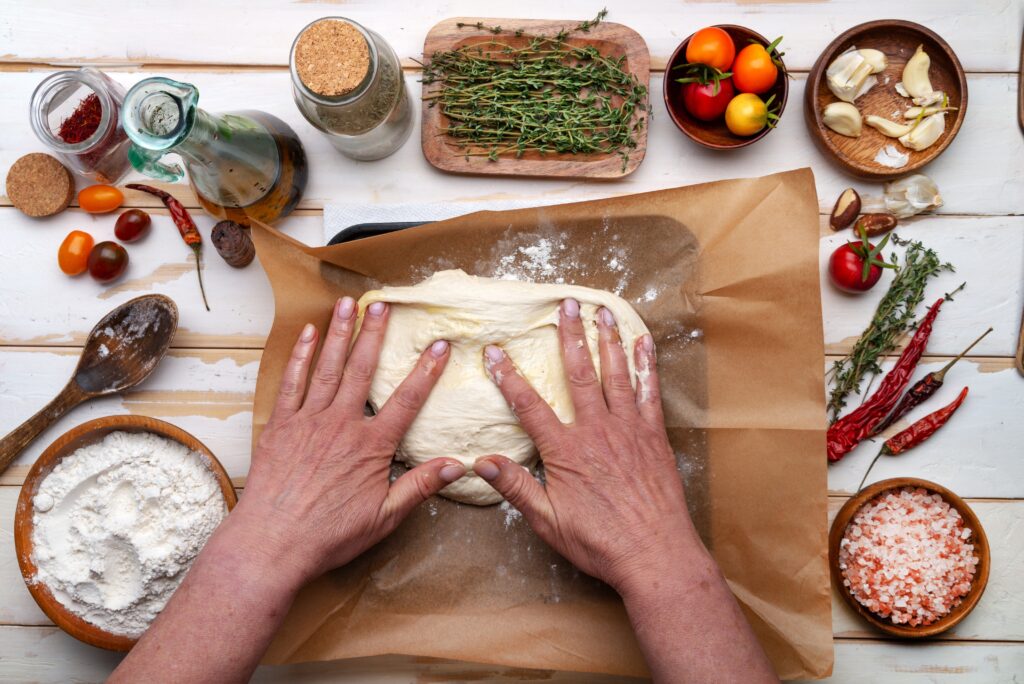
One way to bake pizza without a pan is to use a baking sheet. Here’s how:
- Preheat your oven to the temperature specified on your pizza’s packaging.
- Dust your baking sheet with flour or cornmeal to prevent sticking.
- Roll out your pizza dough to the desired size and thickness.
- Transfer the dough to the baking sheet.
- Add your sauce, cheese, and toppings.
- Bake the pizza in the oven until the crust is golden brown and the cheese is melted and bubbly.
- Remove the pizza from the oven and let it cool for a few minutes before slicing and serving.
Using Aluminum Foil
Another way to bake pizza without a pan is to use aluminum foil. Here’s how:
- Preheat your oven to the temperature specified on your pizza’s packaging.
- Tear off a large piece of aluminum foil and place it on a baking sheet.
- Dust the foil with flour or cornmeal to prevent sticking.
- Roll out your pizza dough to the desired size and thickness.
- Transfer the dough to the foil.
- Add your sauce, cheese, and toppings.
- Carefully fold the edges of the foil up around the pizza to create a makeshift pan.
- Bake the pizza in the oven until the crust is golden brown and the cheese is melted and bubbly.
- Remove the pizza from the oven and let it cool for a few minutes before slicing and serving.
By using a baking sheet or aluminum foil, you can still enjoy a delicious homemade pizza even if you don’t have a pizza pan.
Monitoring the Baking Process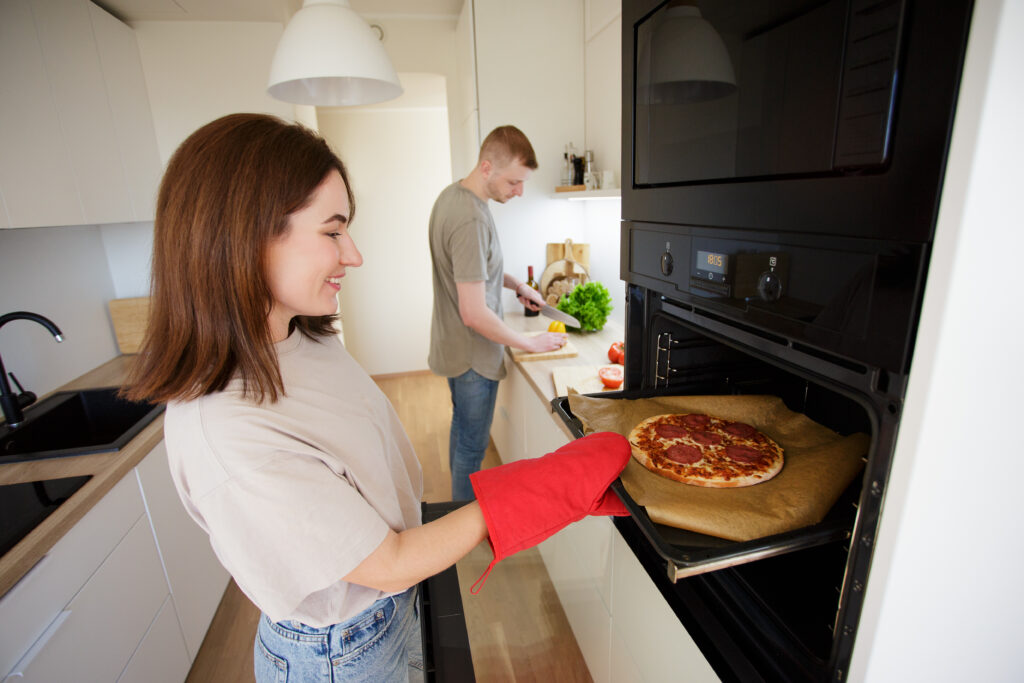
Once you have placed your pizza in the oven without a pan, it is important to monitor the baking process to ensure that it cooks evenly and does not burn. Here are some tips to help you monitor the baking process:
- Use a Timer: Set a timer for the recommended baking time for your pizza. Check the pizza periodically to make sure it is cooking evenly.
- Rotate the Pizza: If you notice that one side of the pizza is cooking faster than the other, rotate it halfway through the baking process. This will help ensure that the pizza cooks evenly on all sides.
- Check the Crust: Keep an eye on the crust as it bakes. If it starts to brown too quickly, cover the edges with aluminum foil to prevent them from burning.
- Use a Pizza Stone: If you are baking your pizza on a pizza stone, monitor the heat of the stone to make sure it does not get too hot. If the stone gets too hot, it can cause the crust to burn.
- Check the Cheese: Keep an eye on the cheese as it melts. If it starts to bubble and brown too quickly, remove the pizza from the oven.
By following these tips, you can ensure that your pizza cooks evenly and does not burn. Remember to monitor the baking process closely to achieve the perfect pizza crust and toppings.
Removing the Pizza Safely
After cooking your pizza without a pan, it’s important to remove it from the oven safely. Here are some tips to help you remove your pizza without burning yourself or damaging your pizza:
- Use a spatula or tongs to pull pizzas off of a pizza stone or pan in the oven onto an upside-down baking sheet, cutting board, or even a plate, assuming your pans are just flat surfaces, like a pizza stone.
- Assemble pizzas on the upside-down baking pan and slide them off it onto the stone in the oven.
- Use oven mitts or heat-resistant gloves to protect your hands from the heat of the oven.
- Be careful not to let the pizza slide off the spatula or tongs as you remove it from the oven.
- Let the pizza cool for a few minutes before slicing and serving.
By following these tips, you can safely remove your pizza from the oven without any mishaps. Remember to always prioritize your safety when handling hot objects and surfaces.
Troubleshooting Common Issues
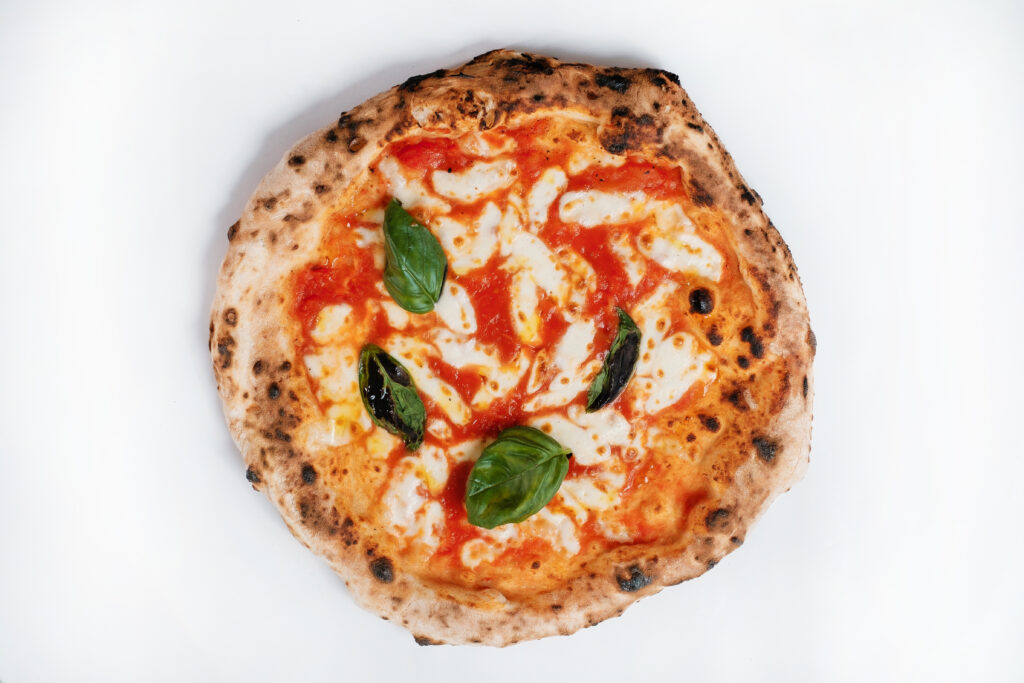
When cooking pizza without a pan, there are a few common issues that can arise. Here are some tips to prevent a soggy bottom and burnt edges.
Preventing a Soggy Bottom
One of the most common problems when cooking pizza without a pan is ending up with a soggy bottom. This can happen when the pizza dough absorbs too much moisture, causing it to become mushy and unappetizing. Here are some ways to prevent a soggy bottom:
- Use a pizza stone or baking steel: These materials help to absorb moisture from the pizza dough, creating a crispy crust.
- Preheat your oven: Make sure your oven is fully preheated before cooking your pizza. A hot oven will help to cook the pizza quickly, preventing the dough from becoming too moist.
- Use a thin layer of sauce: Too much sauce can make the pizza dough too wet. Use a thin layer of sauce, and avoid adding too many toppings that can release moisture during cooking.
- Let the pizza cool before slicing: Allowing the pizza to cool for a few minutes before slicing will help to prevent the crust from becoming soggy.
Avoiding Burnt Edges
Another common problem when cooking pizza without a pan is ending up with burnt edges. This can happen when the pizza is cooked at too high of a temperature or for too long. Here are some tips to avoid burnt edges:
- Use a lower oven temperature: Cooking the pizza at a lower temperature for a longer period of time can help to prevent burnt edges.
- Keep an eye on the pizza: Check on the pizza frequently during cooking to make sure it is not getting too brown on the edges.
- Use a pizza peel: A pizza peel can help to move the pizza around in the oven, ensuring that it cooks evenly and does not get stuck in one spot.
By following these tips, you can avoid common issues when cooking pizza without a pan and enjoy a delicious, crispy crust every time.
Conclusion
In conclusion, there are several ways to cook a pizza in the oven without a pan. Using a pizza stone is one of the most popular methods, and it is easy to use and produces a crispy crust. Another option is to use a heat-resistant chopping board or serving platter as a makeshift pizza pan. These options are affordable and can be found in most households.
If you don’t have any of these items, you can also use aluminum foil, parchment paper, or even a frying pan as a substitute for a pizza pan. However, it is important to note that these methods may not produce the same results as using a pizza stone or a proper pizza pan.
It’s also crucial to ensure that your pizza is evenly cooked by placing it in the center of the oven and monitoring it closely. Don’t forget to preheat the oven to ensure that the pizza cooks evenly and thoroughly.
Overall, cooking a pizza in the oven without a pan is possible with a little creativity and resourcefulness. Whether you use a pizza stone, a heat-resistant chopping board, or any of the other methods mentioned above, you can enjoy a delicious homemade pizza without having to invest in expensive equipment.


